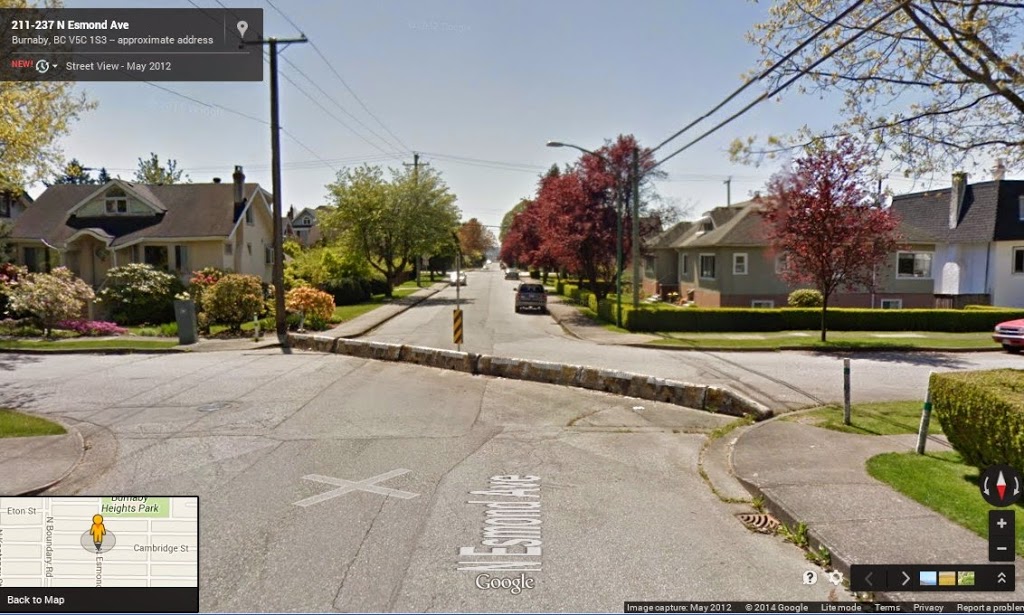Twitter is a pretty cool communications tool. One person can link many others to common information, ideas can be debated 140 characters at a time, and you can immediately link to a larger “community” based not on your geographic location, but your common interests.
The format also allows you to take quick jabs at cultural norms – some of them that need constant jabbing.
One example is the ongoing discussion about how the RCMP and other Law Enforcement message active transportation in the world of motordom. I could list endless examples, from “crackdowns” on helmetless cyclists on protected bike paths, the use of euphemisms like “accident involving a pedestrian”, or the constant messaging that everyone needs to be vigilant around traffic, because one of these cars (never “drivers”) could kill you. Somehow, surrounding pedestrians and cyclists are held more responsible for the operation of the 3,000-lb steel box than the person inside the steel box. The pervasive message is that the safest place to be is inside a car (despite a huge body of evidence that inside a car is the most dangerous place most people in North America ever spend time!)
There have been a couple of “incidents involving cyclists” in Burnaby of late, including one that did not involve a car, but rather infrastructure installed to reduce car traffic. Clearly, this is a sad, unfortunate event, and we don’t really know all the causative factors. This did not prevent the Burnaby RCMP from repeating the “helmet and reflective clothing” meme. We don’t know if a helmet would have helped this person (likely it would have, depending on whether the presumed head injury was to the area typically covered by foam), but there is no doubt reflective clothing would have done nothing to help this person.
What the RCMP did not suggest was that the City should assure infrastructure is safe for cyclists, be they helmet-wearing and lit up like a Christmas tree or not. One thing we know for certain is that the quality of cycling infrastructure is the best correlate to cyclist safety (much better than helmet use does).
Upon reading this story, I immediately went to Google Street View and saw the intersection where the accident took place. It is pretty ugly:
 |
| Google Street View – Click to zoom in. |
A tattered old set of curb-standard concrete barriers, yellow paint faded and tattered, a single sign in the middle of the lane (the main part of which is offset 90 degrees from the direction of travel on Esmond Ave). The barriers go right to the curb, where the offset sidewalk ramps are incomplete. Simply put, there is no safe route through this intersection for a cyclist. Could this crappy piece of infrastructure be at least part of the problem?
So I took a screen capture from Google, and tweeted away that perhaps bad infrastructure was more a part of this than a lack of reflective clothing. And as sometimes happens with Twitter: the message got out. (note, the first hint I got that the reporter wrote a story around my tweet was when I read it in my twitter feed – full circle!)
For a better, and safer, solution to the intersection in question, you don’t have to look any farther than south Burnaby where we have barriers like this…
…which serve the same purpose, but with better visibility, better sightlines, logical through-paths, and are also more attractive in the streetscape.
The City of Burnaby response in the story above is familiar for anyone involved in transportation planning (allow me to paraphrase): it’s been like this for a long time; we think it is probably OK; we don’t think anyone has had an accident here before; we will look at it again.” That last part is satisfying, but the rest sounds like the excuses often heard when a bad piece of infrastructure is pointed out. To many active transportation advocates, tragedy too often sounds like something used to elicit change, instead of something we should be actively trying to prevent through change.
This is why active transportation advocates have to keep beating the drum whenever we see a potentially-unsafe piece of infrastructure.
